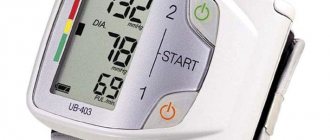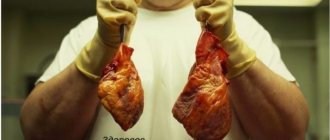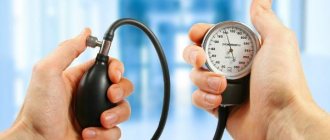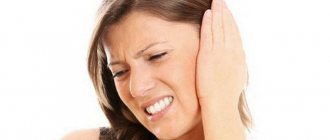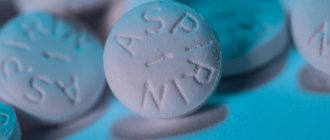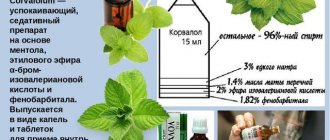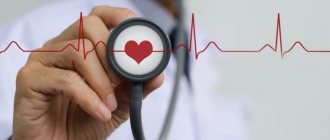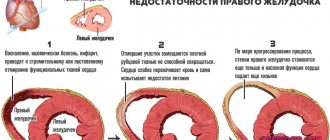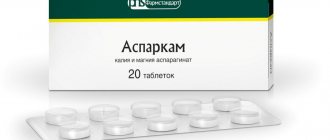Hypotension is a specific condition that is accompanied by abnormally low blood pressure and a whole complex of associated ailments. For diagnosis, indicators of systolic (upper) and diastolic (cardiac, lower) blood pressure are important. When the tonometer readings are 90/60 mmHg. Art. You may suspect low heart pressure, but many people often don’t know what to do in this case. To understand exactly how to help a person, it is necessary to study this problem in detail.
What is hypotension
The standard pressure is 120/80 mmHg. Art. A deviation upward or downward indicates the development of the disease and deterioration in well-being. Moreover, it can change throughout the day, but when the minimum limit of 100/60 is reached, we can talk about hypotension. In this case, treatment is required. With low blood pressure, you may feel unwell and lose strength. Elderly women are most often affected by hypotension. External signs:
- pale skin;
- thinness.
We must not forget that sometimes there are people for whom hypotension is considered a stable condition. They feel comfortable and do not experience discomfort.
What does low blood pressure mean?
Enter your pressure
130
on
90
Search in progress Not found
After a series of studies, doctors found that the nature of the decrease in diastolic pressure in different people can differ significantly. There are three types of deviations that help to understand what low lower pressure indicates and what problems are in the body’s functioning. Types of arterial hypotension:
- Orthostatic. This type of pathology may mean that the human body cannot quickly and correctly regulate indicators. This heart disease is characterized by a sharp downward jump in blood pressure (BP) after a change in position. At the same time, the head may become dizzy, and in some cases the person loses consciousness. The main causes of low pressure of the orthostatic type: pregnancy, dehydration, use of certain groups of medications.
- Postprandial hypotension. The main symptoms of the disease are a sudden rush of blood to the lower extremities after eating. This type of malaise indicates disturbances in the functioning of the endocrine system, mental disorders (neurasthenia, neurosis, etc.), organic changes in the brain (Alzheimer’s disease may threaten).
- Vegetative-vascular. This diagnosis means that the cardiovascular system is developing or functioning incorrectly. Often diagnosed in teenagers.
What blood pressure is considered low for older people?
Two parameters are used for measurement: systolic and distolic. In common parlance they may be called upper and lower. Another name for systolic is cardiac. The concept of norm is individual. It’s difficult to define a strict framework, because everyone is exposed to different loads every day, but in the medical environment, the “ideal” value is taken to be 120/80.
Heart
The upper value is measured at the moment of contraction of the heart muscle. A value between 120 and 135 is considered normal, and a reading above 139 is considered hypertension. A decrease in value to 90-100 is considered low. If an elderly person has a low heart pressure reading of 80, then constant monitoring is required.
Diastolic
This value shows the strength of the influence of blood flow on the walls of blood vessels. Average parameters vary from 60-90. If it drops below 60, then the indicator is considered reduced.
Leave a request for selection of a boarding house
for an elderly person with low blood pressure
Why is low heart pressure dangerous?
Low heart pressure varies in severity, and it determines what negative consequences the human body will ultimately face. The lower the blood pressure, the less nutrients and oxygen the tissues throughout the body receive. The brain tissue and heart muscle suffer the most from such “starvation.”
If measures are not taken and blood pressure is not stabilized, frequent attacks of dizziness and fainting can also cause falls and dangerous injuries. If you don't know what to do if your heart pressure is abnormally low, you should consult a doctor immediately. Only a specialist can help correctly solve such a problem.
Causes of low blood pressure in an elderly person
The measured blood pressure parameters depend on the load on the body and the work of the heart. Doctors name many reasons that influence the increase or decrease.
Physiological
For an elderly person, the following reasons are common due to which blood pressure drops:
- chronic - hypotension is a lifelong companion of a person. The patient adapts to his peculiarity and even at Balzac's age does not notice it;
- orthostatic - occurs when there is a sudden change in position. Most often this happens when standing up;
- taking medications with significant side effects;
- large blood loss;
- long-term treatment requiring strict bed rest.
Pathological
The pathological disease occurs only in adult and elderly patients. He is called:
- anemia;
- vegetative-vascular dystonia;
- endocrinological and other concomitant pathologies.
Medicines for low blood pressure
The most common tableted drugs that help increase heart pressure are Citramon and Pantocrine. These products can be found in any home medicine cabinet. The symptoms of hypertension are successfully corrected by taking nootropic drugs and vitamin complexes, which include potassium, magnesium, iron, and calcium. At the same time, the condition that the selection of therapy is carried out by a specialist, taking into account the physiological characteristics of a particular patient, must be strictly observed. Self-medication is excluded in principle, and can result in serious complications.
By adhering to these simple recommendations, you can significantly improve your well-being, and by reviewing your lifestyle, you can reduce the unpleasant symptoms of vegetative-vascular dystonia to a minimum.
Diseases that cause low blood pressure
Some diseases can affect blood pressure surges:
- Diseases of the heart and blood vessels, namely previous heart attacks, cardiosclerotic changes, arrhythmia. The speed of blood flow decreases, old people experience weakness, weak pulse, and shortness of breath.
- Cardiac asthma causes a sharp decrease in heart rate. A noticeable deterioration is observed after physical activity or a stressful situation. The decrease is accompanied by pallor of the skin and a suffocating cough.
- Pulmonary edema. The condition is characterized by bluish skin, sputum production, and swollen veins in the neck.
- Infectious diseases.
- Allergy, and most often anaphylactic shock.
- Vascular dystonia caused by nervous disorders.
- Ischemia.
- Alzheimer's disease.
The main reasons for the development of pathology
The main root cause of low blood pressure is a decrease in the tone of the cardiovascular system. Due to this disorder, the movement of blood through the circulatory system slows down, since the vessels are very weak. As a result, all organs and systems in the body do not receive the necessary oxygen supply, which causes discomfort and weakness.
Experts have identified the primary reasons that stimulate a decrease in heart pressure:
- improper functioning of the heart, thyroid disease;
- dehydration caused by diarrhea, overuse of diuretics or excessive exercise;
- severe blood loss caused by injury;
- hormonal imbalance;
- peptic ulcers of the gastrointestinal tract;
- cancer, anemia, adrenal disease;
- during pregnancy, a woman experiences low heart pressure and a high pulse, since the expectant mother’s body works for two;
- menopause is one of the causes in women;
- immobilization caused by injury or illness;
- acute infectious disease.
Obviously, there are many factors for the development of hypotension. At the first signs of low blood pressure, it is necessary to seek medical help in order to accurately establish the root cause of the pathology and take measures to eliminate it. Based on the examination results, the doctor will recommend what to drink to normalize blood pressure.
Causes of low blood pressure among men
The male half most often suffers due to genetic predisposition. The disease manifests itself most strongly after 60 years. The disease occurs due to stronger, but rare compression of the heart. The second category of men at risk are athletes. We also must not forget about the harmful effects of bad habits.
Causes of heart pain and hypotension
There are many mechanisms for the formation of painful sensations in the heart area. The causes of heart pain and low blood pressure can be divided into groups:
- organic (during examination it is possible to identify damage);
- functional (no organic pathology detected).
With organic lesions, pain and low blood pressure can occur due to inflammatory pathologies of the epicardium, myocardium, pericardium, result from a lack of oxygen (ischemia) in various forms of coronary heart disease (CHD), the syndrome can occur due to improper blood circulation in the cavities of the heart (defects development, arrhythmias) and so on.
Diseases of the thyroid gland (hypothyroidism), insufficient production of adrenal hormones, anemia, psychological trauma and other conditions can also cause hypotension and heart pain.
Allergies, exposure to toxins, and medications that lower blood pressure will lead to hypotension and pain.
When making differential diagnoses, do not forget about chest pain with gastroesophageal reflux disease, esophagitis. Herpes zoster and intercostal neuralgia can also cause “cardialgia.” All these reasons may also cause hypotension.
We should not forget about somatized depression, in which there is no organic pathology, but the patient is too fixed on his complaints (pain in the heart with hypotension) and it is impossible to convince him that he is actually healthy. In this case, the reason lies in the psycho-emotional sphere, which requires consultation with a psychologist or psychiatrist.
It is worth noting that functional disorders in most cases become the cause of heart pain with hypotension in young people. Vegetovascular dystonia is a condition in which the functioning of the autonomic nervous system is disrupted, which leads to a change in vascular tone and the speed of blood flow in them. In dystonia of the hypotonic type, blood pressure is reduced, and of the hypertonic type it is increased.
Risk factors for hypotensive cardialgia
Based on statistical data presented in many scientific studies, it was possible to identify a set of risk factors for the appearance of pain in the heart area.
These include the following conditions:
- frequent stress;
- fatigue;
- sleep disturbance;
- avitaminosis;
- pregnancy;
- decreased immune reactivity and others.
Their presence will not necessarily be an etiological factor, but will increase the likelihood of this condition occurring.
How is blood pressure formed?
Blood pressure is a derivative of several leading factors. These include circulating blood volume, cardiac output, minute volume of blood circulation, and vascular wall tone.
Cardiac output is the volume of blood ejected in one heartbeat.
Minute blood volume is equal to the product of heart rate and cardiac output. Therefore, heart rate should also be taken into account, since its decrease is accompanied by pain in the heart and a decrease in blood pressure.
Symptoms of hypotension
The disease is characterized by disturbances in the general condition of the body:
- pain in the temporal region;
- nausea and vomiting;
- darkening or black spots in the eyes;
- fainting;
- chronic fatigue;
- inability to concentrate;
- memory impairment;
- aggression and irritation.
Some patients complain to doctors about sensitivity to changes in weather, lack of air and rapid heartbeat. It is very important to determine the cause of the disease in time and begin treatment. Having treated the concomitant disease, hypotension will go away on its own. However, if this does not happen, the doctor prescribes symptomatic treatment, that is, drugs to stabilize the condition.
What causes an elderly person’s blood pressure to drop and their pulse to increase?
It is generally accepted that a rapid heartbeat is a companion to hypertension. However, doctors have to deal with different variations in heart rate and blood pressure. The following phenomena can cause such an imbalance:
- unusual physical activity or strong intellectual stress;
- stress, shock and other emotional disturbances;
- sudden change in weather or climate;
- large blood loss;
- taking diuretics or antihypertensive medications (most often the phenomenon occurs at the very beginning of the course).
The patient may feel pain in the heart, accompanied by heaviness in the abdomen. At the same time, some people feel a lump in their throat. Dizziness, cold extremities and profuse sweating are frequent companions of such dissonance.
Doctors strictly prohibit making treatment decisions on their own. This is very dangerous for the body, since such signs are harbingers of heart attacks and strokes. It is recommended to call an ambulance to make a diagnosis and alleviate the condition. Then visit a cardiologist. He will identify the cause, tell you how to increase low heart or blood pressure in an elderly woman or man at home, and recommend what to drink.
Why is very low blood pressure dangerous in the elderly?
Hypotension may affect the development of ischemic stroke. Therefore, the condition should never be ignored. In this case, it is worth paying special attention to a sharp fall when changing position (for example, when standing up). There are frequent cases of fainting, which are dangerous in their own way.
A decrease in cardiac (systolic) parameter indicates difficulties with pumping blood by the heart. Dystolic indicates a dysfunction of the vascular system. For any deviations, you need to contact a specialist.
What to do if you have chest pain due to low blood pressure
To eliminate the symptoms, you need to find out the cause and follow the doctor's instructions. The doctor will tell you what to take to normalize your heart pressure, get rid of chest pain and improve your overall well-being. Giving up bad habits and negative thoughts, as well as normalized physical activity, walks in the fresh air and your favorite activity will help strengthen the heart muscle.
If the pressure is below normal, but the person feels comfortable, this condition does not require therapy. It’s another matter when, due to fatigue or anxiety, the pressure drops and chest discomfort occurs - the symptoms should be discussed with a doctor.
Herbal pharmaceutical preparations based on valerian, hawthorn, and motherwort will help calm frayed nerves. There are ready-made preparations - Persen, Barboval and analogues, which contain extracts of sedative plants.
Low blood pressure can be normalized by taking vitamins, lemongrass, and ginseng. Among the popular drugs we can recommend: Tonginal, Seduxen, caffeine tablets and a suitable type of antidepressant.
To eliminate pain in the heart area, it is recommended to purchase a special pillow, which is used to prevent heart attacks and normalize blood pressure. The doctor may add folk remedies to the main course of treatment. You need to control your condition, you can keep a diary where you will enter information about the effect of food, physical activity, nervous tension, and pills on your condition.
It is important to eat, follow a daily routine, and give up bad habits. If the condition is serious, treatment takes place in a hospital. Physiotherapy, water procedures, and acupuncture are added to medications.
What should an elderly person take for low blood pressure?
You can stabilize your well-being using alternative medicine methods or medications. The choice and appointment of a doctor depends only on the patient’s well-being. The simplest and long-known method is a glass of salt water. This is an effective method with no contraindications. Moreover, it can be used even by pregnant women. To prepare the drink you will need 0.5 teaspoons of salt per 200-250 ml of liquid. You must wait until the salt granules have completely dissolved and drink the contents of the glass. See also: How to choose a blood pressure monitor for home use for elderly people
Raisins 50 grams of berries are brewed in a glass of boiling water and left overnight. When low, you can eat both the berries themselves and drink the infusion. Natural teas with rose hips, black strong sweet tea, hibiscus. Other herbal remedies:
- ginseng infusion;
- Leuzea tincture;
- decoction of lemongrass seeds.
Self-prescription of medications to increase blood pressure in old age is strictly prohibited. The doctor selects the optimal remedy based on the patient’s complaints and other concomitant diseases. Very often, medications have contraindications and side effects, so their purchase must be taken seriously. If the situation is critical, then papazole, citramone, and aspirin are allowed.
What symptoms indicate hypotension?
In fact, having low blood pressure is much better than high blood pressure. Doctors believe that patients with an average blood pressure of 90/60 live much longer than those who suffer from hypertension.
But when the blood pressure monitor drops below 90/60, the following symptoms occur:
- dizziness, which in severe cases can develop into delirium;
- pale skin covered with sticky sweat;
- nausea;
- deterioration in vision clarity;
- dull and rare heartbeat;
- fainting.
If the tonometer shows 90/60 or lower, then a diagnosis of hypotension is made.
Episodes of hypotension in young, healthy people are usually asymptomatic. But low blood pressure in older people can provoke very unpleasant consequences, including falling into a coma and death. Therefore, at the first manifestation of the above symptoms, you need to lie down and, if possible, raise your legs above body level (for example, throw them on a pillow). This should help relieve mild symptoms within a few minutes.
Nutrition
An old person prone to low blood pressure is recommended to adhere to a dietary diet. The entire daily amount of food should be divided into 4-5 times. It is not recommended to overeat. If you feel hungry between meals, you can have a light snack: an apple, nuts, yogurt. Monitor the amount of fluid you drink. To maintain health, an adult needs to drink 2 liters of clean water daily.
Limit your salt intake. There is no need to exclude it completely. Think over your diet so that it includes a maximum of healthy foods rich in vitamins and minerals. In the network of boarding houses “Zabota”, each patient is given an individual diet that meets his needs. We monitor the patient's condition and are always there when necessary.
Emergency help
If there is a sharp jump, it is necessary to urgently increase it. It is important to remember that any medication can only cause harm and aggravate the situation. Prepare hot, strong black tea for the patient. Put him to bed. It is recommended to place your head at a level just below the pelvis. This way the blood will flow to the head and the condition will improve a little. A pillow placed under your head will slow down the process of stabilization. Call an emergency doctor. Very often, complications arise after attacks of hypotension. Do not neglect visiting a doctor.
If the attack occurs in a public place or transport, the patient must be seated and his head tilted to his knees.
Approved drugs in emergency situations include Glycine. If you want to urgently increase your performance or relieve loss of strength, many drink an infusion of ginseng. You should drink it carefully, as this herb can cause severe allergic reactions, and its use is contraindicated for those suffering from arrhythmia.
First aid for abnormally low heart pressure
If a person suddenly becomes ill and the reason is a sharp drop in blood pressure (in particular, cardiac parameters), the following measures must be taken immediately:
- The patient is placed on a horizontal surface so that his legs are as high as possible;
- There should be fresh air in the room where the patient is. If necessary, begin ventilation immediately;
- You can put a pinch of salt under your tongue;
- A cup of strong, very sweet coffee or black tea will help tone your blood vessels;
- If the patient's condition allows, a contrast shower is recommended. One minute a person takes a cold shower, another minute a warm one. The algorithm must be repeated at least 4 times.
